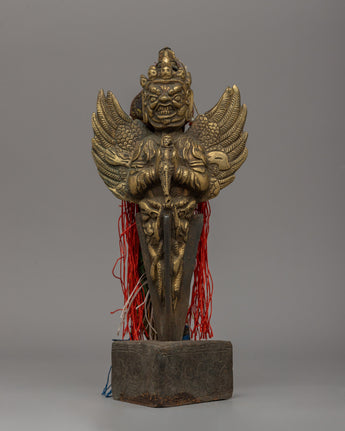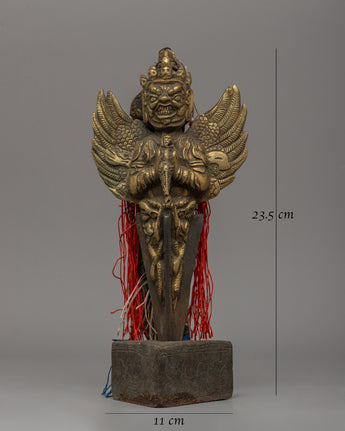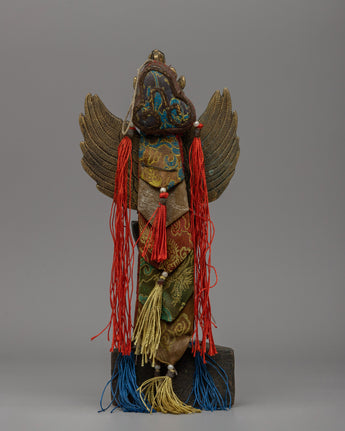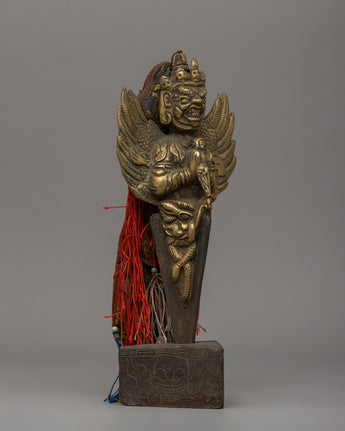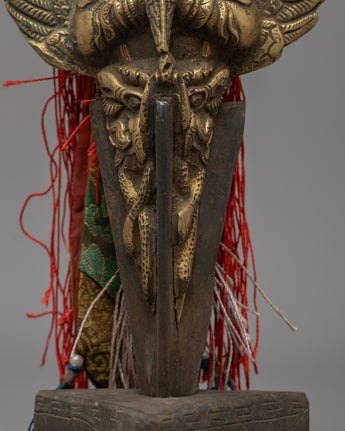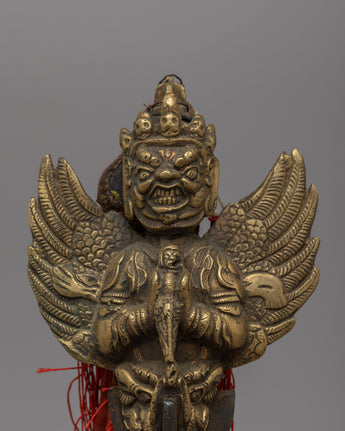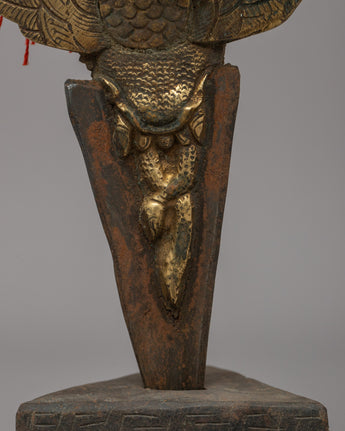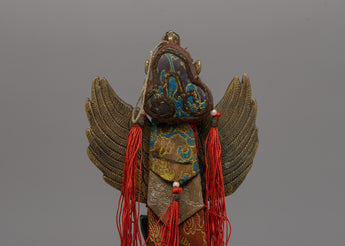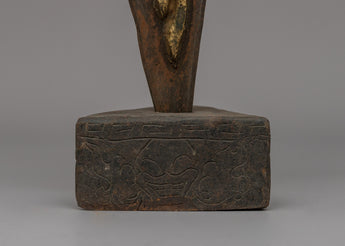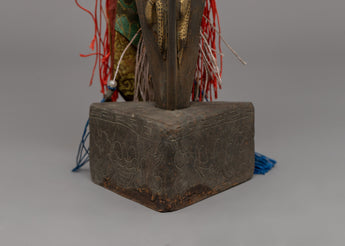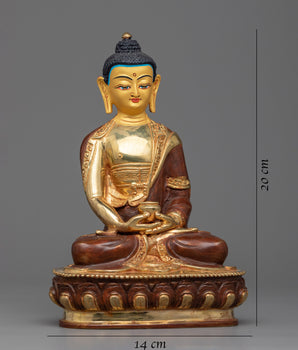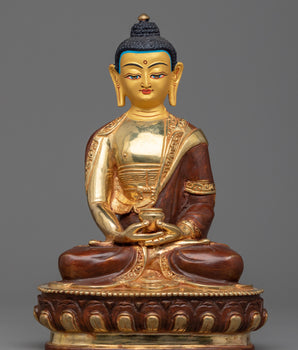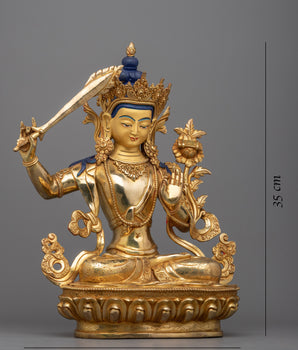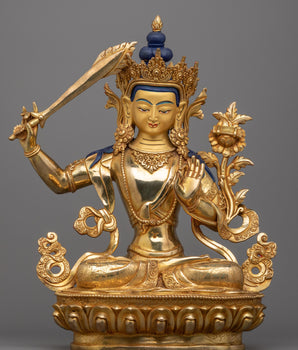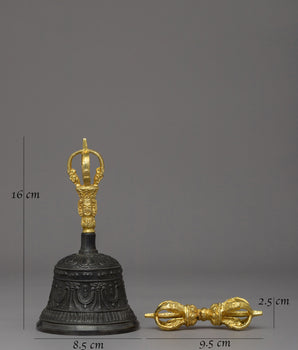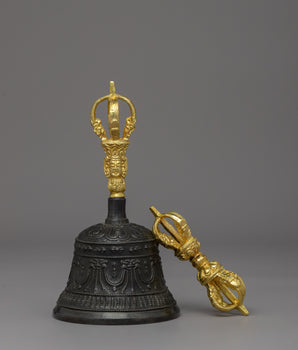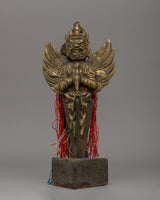
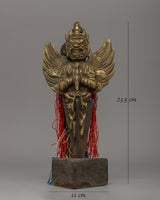
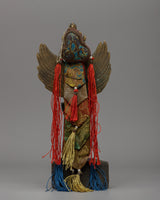
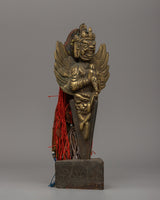
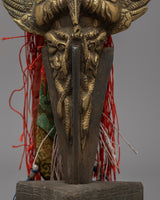
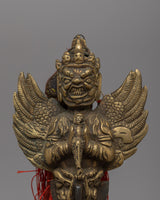
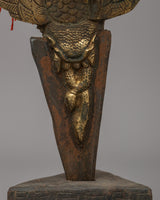
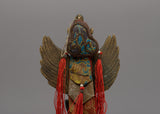
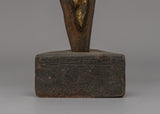
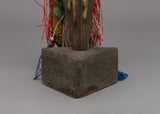
Handcrafted Tibetan Vajrakilaya Phurba | A Powerful Tantric Ritual Tool

100% AUTHENTIC

HANDMADE

FREE SHIPPING
Brass Buddhist Ritual Dagger for Protection & Energy Purification
--------------------------------------------
Size: 23.5cm(Height) x 11cm(Width)
Weight: 1.09kg
Material: Brass Alloy, Iron Stand
--------------------------------------------
About The Ritual Item :
This Tibetan Vajrakilaya Phurba is a holy Buddhist ritual dagger made of brass alloy with an iron stand. It is 23.5 cm tall and 11 cm wide with 1.09kg weight. The phurba, a crucial instrument in Tantric Buddhist ceremonies, is used to anchor positive energy, dispel negative energies, and subdue spiritual barriers. The dagger, which has its roots in ancient Vedic traditions, represents the eradication of ignorance and the piercing of illusion. In Tibetan Buddhism, especially in Vajrakilaya practices, this intricate phurba is respected as a guardian and remover of barriers on the way to enlightenment.
The Vajrakilaya Phurba's artwork, which depicts a furious deity that represents the conversion of negative energy into wisdom, is very significant. The winged deity and elaborate carvings represent Vajrakilaya's ferocious compassion, protection, and divine might. The triple-edged sword symbolizes the eradication of ignorance, aversion, and attachment, and its ceremonial power is increased by the sacred threads and ornamental knots. This Buddhist ritual dagger is a powerful spiritual weapon against negativity and barriers, whether it is used for meditation, altar display, or ritual rites.
Introduction To The Phurba :
The ceremonial dagger (Sanskrit: Kila; Tibetan: phurba) is important for the expelling of evil and is thought to be especially effective in neutralizing the forces that obstruct Tantric Buddhist practice. It has ancient origins, first appearing in the Indian Rg Veda as the core blade of the vajra used by Indra to destroy the primordial cosmic snake Vritra. Kila, which means peg or stake in Sanskrit, was most likely associated with Vedic sacrifices. Meditation on the Vajrakila Tantra, an early Indian scripture first promoted in Tibet in the eighth century by Padmasambhava, one of the founding teachers of Tibetan Buddhism, is used to invoke the three-headed Vajrakila Buddha.
How to set up your own Buddhist Shrine?
Find a clean, quiet, and uncluttered spot
Set up an altar table, and cover it with an altar cloth that calls to you
Place your sacred item (statue, thangka, or a picture of Buddha) at the center


